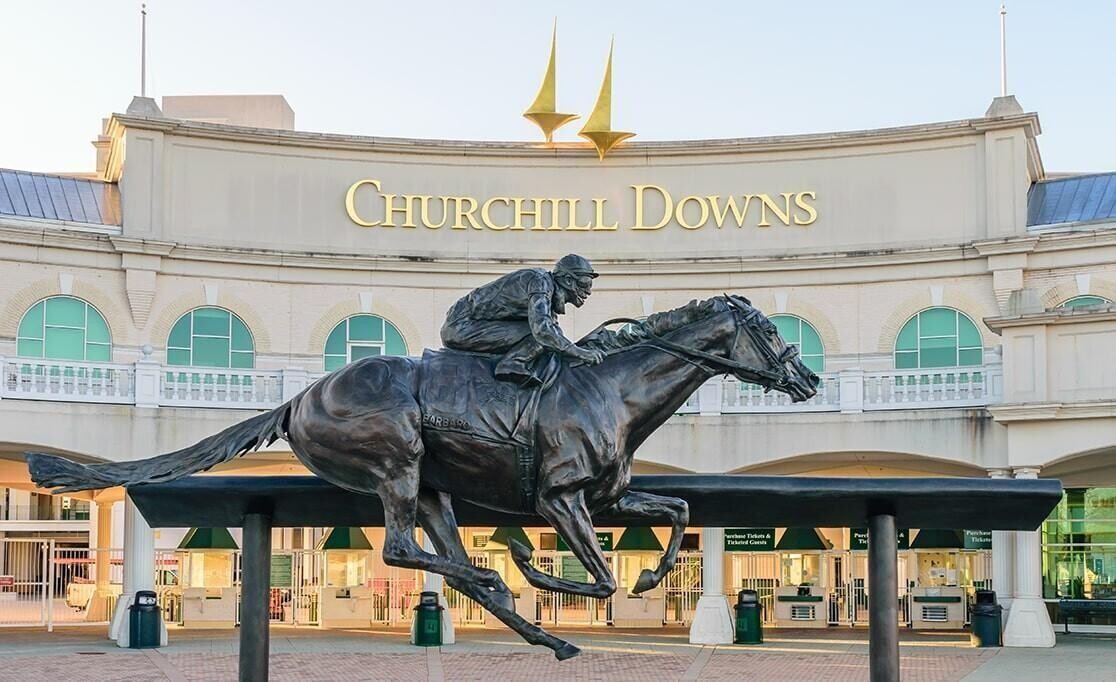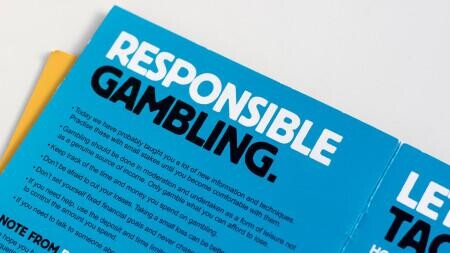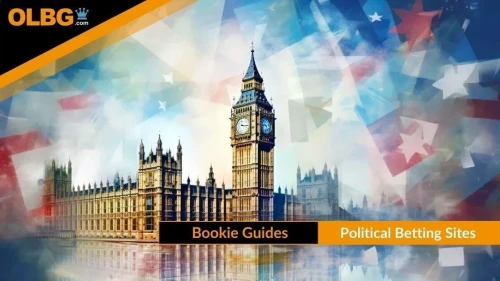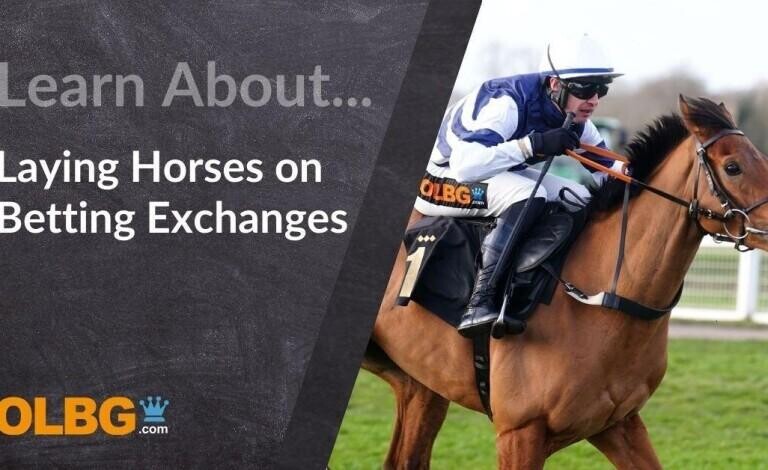Football Manager Expert and Political Betting Specialist across Exchange and Spread Betting Sites
Welcome to the fascinating world of laying horses.

This essential guide is brimming with laying strategies, expertise, and insider tips to improve your betting significantly.
This guide promises to deliver a wealth of laying knowledge, perfect for both beginners and seasoned bettors.
Transform Your Betting Experience - The Guide to Laying Horses 🏇💸
🏇 Master your betting game with our complete guide to laying horses. Bet smarter.
Choose A Betting Exchange
There are currently four exchanges where you can lay horses
The biggest and busiest is Betfair, which means more bets, both back and lay, are placed on that exchange.
This is important because when you want to lay a horse at a specific price, you are more likely to:
1. Get that price matched on Betfair.
2. Get the price matched more quickly on Betfair.
However the other exchanges give us the opportunity to select the best lay odds at any one time from four separate providers.
An article that is regularly updated is How To Effectively Use A Betting Exchange: The Ultimate Guide.
If you are unsure of any aspect related to the exchange please check it out.
Your First Lay Bet
You have undertaken your form study or followed a tipster or followed the market and decided that a particular horse is not going to win.
You now want to profit from that by placing a lay bet.
| Card Number | Horse | Back | Back | Back | Lay | Lay | Lay |
|---|---|---|---|---|---|---|---|
| 6 | Maries Rock | 2.28 | 2.30 | 2.32 | 2.34 | 2.36 | 2.38 |
| 2 | Dashel Drasher | 3.2 | 3.25 | 3.3 | 3.35 | 3.4 | 3.45 |
| 4 | Hugo's New Horse | 8.6 | 8.8 | 9.0 | 9.2 | 9.4 | 9.6 |
The above is how the betting looks on an exchange.
The best Lay (bet against winning) price currently on offer for those three horses is always in pink and are nearest to the middle: so
Maries Rock @ 2.34
Dashel Drasher @3.35
Hugo's New Horse @9.2
When you click on the price of the horse you wish to lay, your lay slip appears.
In this instance you have decided to Lay (bet against winning) Maries Rock at 2.38 to £10.
This is what will happen once the race is finished.
Maries Rock Loses - You Win £10
Marie Rock Wins - Your Liability £13.40
Maries Rock Wins - Your Payout £23.40
The way to think about this is imagine you are working in a high street betting shop behind the counter and you are the bookmaker - you accept a £10 bet from a customer and if it loses you as the bookmaker keeps the £10
However if it wins wins you as the bookmaker payout £23.40 which is the customers £10 plus £13.40 for the winning bet, a total of £23.40.
When you lay a bet on a betting exchange your are in essence being the bookmaker behind the counter.
Exchange Odds
The exchange odds like the bookmaker odds move all the time, they ebb and flow right up to the off.
Here is an example of an exchange favourite (Kandoo King), from 48 hours before the race right up to when it is at the post.
| Kandoo King Betfair Odds | Day |
| 2.86 | Opening Price Wednesday Morning |
| 3.38 | Opening Price Thursday Morning |
| 4.07 | Closing Price Thursday Evening |
| 4.16 | Opening Price Friday Morning |
| 2.26 | At The Post Price |
You can see the huge fluctuation of odds over the 48 hours. With every movement of odds you can profit.
It is in your interest to monitor these prices and always try and take the shortest odds when laying (betting against) a horse.
The smaller the odds you lay, the less of a liability you will have to pay out if the horse wins.
Reasons To Lay Horses
Many layers simply lay horses they do not think are going to win. However there has to be a reason to oppose the horse that is being laid.
In racing there are many factors that can count against a horse and if one or more of those factors is not in place then it can be the difference between a horse winning by a wide margin and being beaten by a wide margin.
Price

Sometimes a horse will simply be trading at a price that does not truly represent its chances in the race.
The lower the price relative to its chances the better the value for the punter who is laying it.
Laying all short priced horses is not a guaranteed route to profit, as is the case for not laying all favourites
(Around 35% of SP favourites win races in the UK).
Each horse in the race needs to have its relative chances and odds evaluated before a logical decision is made.
Drifting Odds
If the bookmakers know more than us (most times they do) and they allow the horse to drift (get bigger) then normally the exchange odds get bigger as well.
Some layers of horses take this mean that horse will not win, especially if at the same time there has been support for other runners in the race,
However this is only a pointer and should not be taken as gospel that the horse will not win.
The best betting sites just want to balance the books and make a profit whatever the outcome, they may have seen very few bets placed on the horse so their liability is small, therefore they can increase the odds with little worry.
Always Remember
Drifters do win, horses that go off at bigger odds do win horse races.
Ground
However good a horse is, some just cannot go an inch in certain types of ground.
Breeding will suggest what type of ground a horse is likely to enjoy but nothing is set in stone with breeding.
A horse that previously struggled in a certain type of ground that is meeting that ground again after showing improved form back on their favoured surface is often a good lay.
Remember other exchange backers and layers will know this and it may already be factored into the price.
Class
Look at the class of race the horse has run in previously, is it up or down or running in the same class.
- In 5 years of UK horse racing (2018-2023) around 18% of horses that stepped up in class won, meaning 82% lost.
- In 5 years of UK Horse racing (2018-2023) around 23% of horses that stepped down in class won, meaning 77% lost.
As you would expect those running in an easier race (lower class) performed better.
Trip
When a horse runs at a new distance for the first time they are always running in unknown territory.
Previous races can suggest a step up or down in trip might bring about improvement in the horse but it is never guaranteed.
Breeding is likely to suggest what sort of trip is going to be suitable but there are no guarantees.
Going against the grain in opposing something that many others think is going to improve can often be profitable for layers if the price is short enough.
Course
 Image: shutterstock
Image: shutterstock
Some horses are better suited by different types of horse racing tracks.
- Whether the bends are left or right handed.
- The length of the final straight - some horses need a longer straight to get going.
- The sharpness of the turns & hills - Courses like Chester and Brighton have particularly sharp turns. Courses like Epsom and Lingfield have lots more undulations than many other courses.
- Of course you are not just looking that this from the perspective of the horse you are laying but also the other horses.
- Does the horse run better/worse on All Weather tracks.
- Maybe one of the other horses has a particularly good record at this track but runs badly elsewhere.
Quirky Horses
Some horses seem to struggle to get their head in front whatever the opposition.
A horse with a string of second places next to its name could be described as consistent but might also be considered a 'quirky' sort or even a 'dog'.
Horses that find little under pressure or don't do anything when hitting the front can often be artificially short prices when dropping in class and many layers will be willing to take them on whatever the opposition.
Days Since Last Run
The ideal time between runs can vary by horse and often the distance it runs over and the length of the campaign can be a factor.
21 days is often cited as a good length of time between races.
Very short periods since the last race often create more uncertainty about a horse, as do very long periods which bring into question the horses fitness.
Horse Racing Tipsters

There are many high profile tipsters (Racing Post RUK, ATR, OLBG, twitter, facebook etc) who publicly release their selections.
The bigger following they have the more likely that their tips will be cut in price on the exchange.
You need to be aware of these tipsters when laying a horse, as they can significantly affect the lay odds.
Just Poor Value
The beauty of laying is that if you think a horse is very poor value from a backing perspective then this could make it great value for laying.
Ante Post Laying
Ante Post betting involves taking a position on a race weeks or even months in advance.
The vast majority of Ante Post races have more runners when first available compared to how many runners actually line up on the day.
You will be tying up your available betting funds for a longer period of time.
Ante Post
The bigger Cheltenham Festival and Grand National meetings + the Flat Classics generally attract the most ante-post bets in the UK.
If you are going to be laying at the head of the market (most straight lays involved the head of the market) then you need to be as confident as you can be that the horse does not have what it takes to win.
Ante post betting can be a layer's paradise because a horse has to simply not run for the layer to win the bet.
However the vast majority of Ante Post races have more runners when first available compared to how many runners actually line up on the day.
As an example you may lay the favourite in a 12 runner competitive handicap at say ante post odds of 6.0 (5/1).
Once we hit the 48 hour declarations that 12 runner handicap has become an 8 runner less competitive handicap and the favourite is now 3.0 (2/1).
With ante post laying you need to be cautious.
Please visit the Ante Post betting school article for further information.
Laying In Running
One type of laying that is available on the exchanges is laying in running. This means looking to lay (Bet against) horses whilst they are taking part in the race.
In Running Pictures
You need to be aware that the TV pictures being beamed as live from the course are subject to a delay. This means those laying on course will have a time advantage compared to anyone laying horses from home.
The risk is often much greater because as the race proceeds you have less and less time to close your bet.
Most layers of horses who have bet in running will have experienced a big loss at some time or another.
It is a somewhat specialist skill as the layer will need to have a good understanding of the way horses travel, and a good understanding of pace.
It is also important to have a great knowledge of the form book as horses that appear to be going well but find little under pressure are an in running punter's dream.
- Identify reasons to oppose horses
- Understand ante post markets
- Check market movers and drifters with the bookmakers
- Check market movers and drifters on the exchanges
- Understand pace if you are laying in running
- Check course and distance winners
- Know which horses are front runners
- Know which horses can be slowly away/have start problems.
- Note jockey bookings, especially weight allowances and one trick jockeys.
- Learn how different horses travel
- Check high profile public tipsters as this lower the price.
- Check in running prices.
Trading On A Betting Exchange
A layer on an exchange can simply make money by laying horses that are later going to be trading at a bigger price.
Once the layer has got themselves into a position where they will profit if a horse is beaten, they can then back the same horse at bigger odds (if the market allows it)
You do not need to deposit further cash based on the position you have already achieved.
The amount of profit that can be locked in will depend on the original stake and how big the drift in the horse's price has been.
Predicting which horses are going to contract in price and which are going to drift is often difficult.

There are however, some horses that always seem to drift in the betting
There are also horses that have not run for a while that drift because of question marks over their fitness.
Other reasons horses drift include being unproven in the conditions of the race (ground or trip) or simply due to the strength of other horses in the same race.
OLBG member Nors is a big fan of trading and he has written a blog called Betfair Horse Trading and that is a great read for anyone wanting to learn more.
He also has an approach to trading horses just before the off and you can read more about that here.
Trading For A Free Bet
You find a horse that you expect to be gambled on during the day and hence you expect its price will shorten.
Trading Expectations
Trading is often seen as a no lose situation, especially when you read posts on social media. You need to be aware that many trades will go against you. The skill is keeping those losses to small monetary amounts.
Example
A) You have £100 on at 8/1 in the morning (Bet 1)
An hour before the off the horse is trading at 5/1.
You can lay off your £100 stake at odds of 5/1 (Bet 2)
IF THE HORSE LOSES:
Bet 1 loses => you lose £100
Bet 2 wins => you win £100 (the amount of stakes you layed)
You break even overall.
IF THE HORSE WINS:
B) Bet 1 wins => you win 800
Bet 2 loses => you lose 500 (the amount you had to pay out laying £100 @ 5/1)
You win £300 overall.
So essentially what you have created is a situation where you win £300 if the horse wins but lose nothing if it loses - essentially a free bet!.
When laying a bet you need to Lay Low and Back High to secure your profit
Once you have laid a horse (Bet against it) any increase in price will secure you a profit
Greening Up
The above term means you have secured a profit across all selections WHATEVER THE RESULT.
Once you have secured a profit on your selection you divide your profit across all the runners in a race.
You then profit whichever horse wins the race.
C) You have £100 on at 8/1 in the morning (Bet 1)
An hour before the off the horse is trading at 5/1.
You can lay off your £100 stake at odds of 5/1 (Bet 2)
You then divide the pre race profit of £300 across all the runners in the race meaning whichever horse wins you win. (Bet 3)
The above is a perfect scenario, however be careful, if the horse you backed at 8/1 in the morning with a £100 drifts to 16/1, you will not be able to get out of the bet with a profit and will lose money.
Trade or Lay
Deciding to always trade horses is less risky than straight laying, but both have their pros and cons. However those who have undertaken research and form study will have an advantage in both trading and laying.
How An Approach To Laying Might Be Different From Your Approach To Backing
A member shared his thoughts on how differently a punter might look at a race if he was looking to lay a horse compared to how he might look at it when looking to back a horse:
There is possibly a major difference between selecting horses with a view to BACKING or LAYING.
When looking for a horse to back, it is generally the custom to check all or at least most of the runners to some degree, only then will value be sought.
When looking for a horse to Lay, I tend to start by surveying the first three in the market and then try to match the horse to the price rather than the other way round.
If I don't fancy laying a horse at the price available I simply move on, there are more shorties waiting to be laid.
Further reading is available via these articles.
Laying Horses: Delving deeper into the dark art.
Introduction To Laying The Next Stage
FAQ
-
What does to lay a horse mean?
When you lay a horse you are saying that horse will NOT win the race - Your bet is winning one if the horse does not win
When you lay a horse in the place market you are saying that horse will NOT place - Your bet is a a winning one if the horse does not place.
-
How do i win a lay bet
When the selection you have laid does not win the race, you win the backers stake.
A backer wanted to bet £10 at 3.0 (2/1) on a horse to win the race, i laid that bet and the horse lost, therefore i win his £10.
-
What is liability when laying a bet
This is your potential payout if the horse you laid wins the race.
You lay a horse at 3.00 (2/1) for £10, your liability is £20.00.
You lay a horse a5 5.00 (4/1) for £10, your liability is £40.00.
-
What is payout when laying a bet
When laying a bet on betting exchanges you will see
Liability and Payout.
The payout includes the backers stake.
You lay a horse at 3.00 (2/1) for £10, your liability is £20 but your payout is £30.00 as this includes the backers stake.
Again think back to placing a bet at 2/1 in a traditional bookmakers, you bet £10 at 2/1, the horse wins and the bookie gives you back £30.
-
Can you make money laying horses?
Laying a horse should be treated in the same way as backing a horse.
You can win individual bets, however to win consistently is much harder.
-
How do betting exchanges make money
The exchanges charge you a commission, normally between 2% and 5% on winning bets.
Responsible Gambling
Everyone needs to understand that they need to gamble responsibly. Please make sure you only place bets when you can afford to. There is a wealth of helpful gambling advice via the article below.

Responsible Gambling Features, Function and Help
Keep Reading
Entertainment Betting Sites: 64 Bookmakers Compared on Reality TV, Entertainment and Novelty Bets

Dive into our in-depth comparison of 64 bookmakers, sizing up their offerings in entertainment, reality TV, and novelty betting markets. Harness the opportunity to boost your betting spree with our top 10 hand-picked betting sites recommendation.
Continue ReadingTop 10 Political Betting Websites in the UK

Explore our comprehensive guide to Political Betting in the UK. We rigorously analyse 64 bookmakers, comparing their offerings in politics wagering, before presenting an insightful Top 10 list with the leaders in this field. Find your perfect match for your political betting needs
Continue ReadingSnooker Betting Guide: Types of Bets and Popular Events for Gambling

Discover the art of snooker betting with our comprehensive guide. From understanding odds to smart bet types, elevate your game. Read on to become the betting champ of the green baize!
Continue Reading

